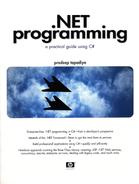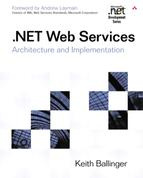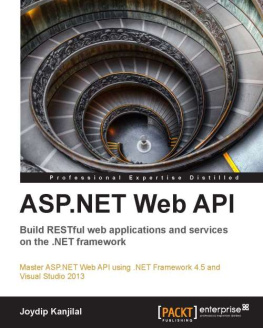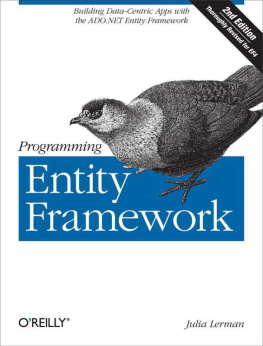Tapadiya - .NET programming : a practical guide using C♯
Here you can read online Tapadiya - .NET programming : a practical guide using C♯ full text of the book (entire story) in english for free. Download pdf and epub, get meaning, cover and reviews about this ebook. City: Upper Saddle River, N.J, year: 2002, publisher: Prentice Hall PTR, genre: Computer. Description of the work, (preface) as well as reviews are available. Best literature library LitArk.com created for fans of good reading and offers a wide selection of genres:
Romance novel
Science fiction
Adventure
Detective
Science
History
Home and family
Prose
Art
Politics
Computer
Non-fiction
Religion
Business
Children
Humor
Choose a favorite category and find really read worthwhile books. Enjoy immersion in the world of imagination, feel the emotions of the characters or learn something new for yourself, make an fascinating discovery.
- Book:.NET programming : a practical guide using C♯
- Author:
- Publisher:Prentice Hall PTR
- Genre:
- Year:2002
- City:Upper Saddle River, N.J
- Rating:3 / 5
- Favourites:Add to favourites
- Your mark:
.NET programming : a practical guide using C♯: summary, description and annotation
We offer to read an annotation, description, summary or preface (depends on what the author of the book ".NET programming : a practical guide using C♯" wrote himself). If you haven't found the necessary information about the book — write in the comments, we will try to find it.
Abstract: Enterprise-class .NET programming in C#-from a developers perspective. Internals of the .NET Framework-learn to get the most from its services Build professional applications using C#-quickly and efficiently Hands-on approach covering the Base Class Library, Remoting, ASP .NET Web Services, concurrency, security, enterprise services, dealing with legacy code, and much more .NET developers need more than buzzwords to get the job done. To tackle enterprise-class projects, they need both a real understanding of the .NET architecture and a working knowledge of how to put its services to work. In .NET Programming: A Practical Guide Using C#, .NET authority Pradeep Tapadiya takes a straightforward, hands-on approach to explain everything you need to know from development to deployment and maintenance for this platform-all from a developers perspective. Using C# as the primary language, and with plenty of code examples throughout, this book is an excellent way to learn: The .NET infrastructure-packaging and deployment, the common language runtime and its services, and the .NET Framework class libraries Distributed computing-develop object-remoting applications for intranets and Web services for the Internet How to develop thread-safe code using the .NET synchronization infrastructure and learn asynchronous programming Interoperability with native DLLs and COM applications How to develop secure applications using role-based security and enforce security for third-party applications using code access permissions Enterprise services-develop scalable applications, support transactions, and more. Appropriate for experienced developers, .NET Programming will help you get the most from the .NET architecture-today
Tapadiya: author's other books
Who wrote .NET programming : a practical guide using C♯? Find out the surname, the name of the author of the book and a list of all author's works by series.






![Josh Juneau [Josh Juneau] - Java EE 8 Recipes: A Problem-Solution Approach](/uploads/posts/book/119371/thumbs/josh-juneau-josh-juneau-java-ee-8-recipes-a.jpg)


